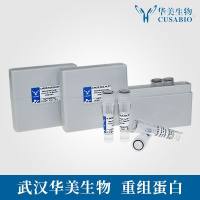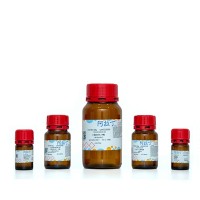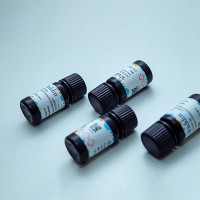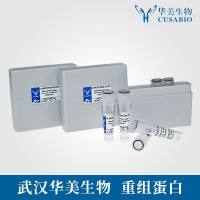Inverse PCR for PAC-end sequencing
互联网
Inverse PCR for PAC-end sequencing
from Brad Barbazuk
Goal is to generate PCR fragments that contain the ends of PAC inserts that can be sequenced. For inverse PCR we cut the PAC once in the vector (near outward primer site) and once at unknown site in insert (and many other places outside these sites, that don't matter). Following ligation to generate small circles, PCR is performed with outward facing primers at the end of the vector that will amplify a product that contains the end of the insert. To increase the odds of getting an amplifiable product, we use two different enzymes (used singly!!) per pac end - NlaIII and RsaI for the SP6 end, and NlaIII and HinPI (or HhaI) for the T7 end.
Primers
PCYPAC2SP6L GCC GTC GAC ATT TAG GTG
PCYPAC2SP6R GAT CGA AAC GGC AGA TCG
PCYPAC2T7L CCT TGA GAG CCT TCA ACC
PCYOAC2T7R CGA GCT TGA CAT TGT AGG AC
Stages in protocol
(1) Restriction digest of PAC DNA
(2) ligation of restriction digests
(3) PCR amplification of ligation products
(4) Sequencing of PCR products
(5) Trim sequence of primer and vector sequence.
(1) Restriction digests
75-200 ng PAC DNA in 20 ul restriction digest.
NlaIII
___ul PAC DNA
2 ul buffer 4(NEB)
___ul H20
1 ul NlaIII (10 u)(or RsaI, or HinPI)
20 ul total
note - use buffer 1 for RsaI, buffer 2 for HinPI digestions
Incubate 2 hrs 37 degrees. You may want to run a portion (5 ul) on gel to see that digestion happened (next to undigested PAC lane).
Heat inactivate Restriction enzyme. 20 min 65 degrees. (this will prevent redigestion during ligation).
(2) Ligation reactions..
2 ul Digestion
2 ul 10 X ligation buffer
2 ul 10mM ATP (if not in ligation buffer)
13 ul H20
1 ul (400 units NEB) ligase
Incubate 2 hrs RT. You may want to run a portion on gel next to digests to see if evidence of ligation.
(3) PCR reactions
(primers are stored at 10 um)
| SP6 Nla III | SP6 RsaI | T7 NlaIII | T7 HinPI |
| 5 ul NlaIII lig.rxn | 5 ul RsaI lig.rxn | 5ul NlaIII lig.rxn | 5ul HinPI lig.rxn |
| 1 ul pcysp6L | 1 ul pcysp6L | 1 ul pcyT7L | 1 ul pcyT7L |
| 1 ul pcysp6R | 1 ul pcysp6R | 1 ul pcyt7R | 1 ul pcyT7R |
| 18 ul PCR mix | 18 ul PCR mix | 18 ul PCR mix | 18 ul PCR mix |
| 0.1 ul TAQ (0.5 unit) | 0.1 ul TAQ | 0.1 ul TAQ | 0.1 ul TAQ |
Now, we need to know if any of these amplified for seqeuncing. Take 5 ul of PCR reaction to gels with 100 bp ladder to get accurate sizes.
| PCR reaction | Minimal Expected Size | Problem size (PAC vector alone) |
| NlaIII - SP6 | 72 + ins | 355 |
| RsaI - Sp6 | 65 + ins | 79 |
| NlaIII-T7 | 120 + ins | 125 |
| HinPI-T7 | 114 + ins | 305 |
(4) Sequencing Chemistry
(a) ExoIII/SIAP (Shrimp alkaline phosphatase) treatment to remove oligonucleotides
5 ul PCR product
2 ul exo/SAP mix (2 ul exo, 2 ul SIAP, 6 ul H20 for mix)
15 min, 37 degrees
15 min 80 degrees to inactivate enzymes
add 7 ul H20
(b) Big Dye Terminator Sequencing
Follow lab protocol for Big Dye Sequencing. We use a 1/3 volume reaction.
In strip tubes:
2.5ul Big Dye Mix
1ul Template DNA
1ul primer (one of the primers used for amplification)
3.5ul H20
cap
Spin down 10" to get all products mixed at bottom
Cycle sequencing - 35 cycles
94C - 15"
45C - 5"
72C - 2'
(c) Precipitate DNA
add
1ul 3M NaOAc
50ul cold 100% ethanol
spin 30 minutes to precipitate (3500 rpm in plate centrifuge)
wash pellet 2x with 100 ul 70% ethanol
dry pellet, store -20 till ready to load
(5) Trim vector and primer sequences from reads. Use sequence below to trim from start of direct read. I have included the primer sequence, which together with the first few bases will not show up on your sequence. Use reverse complement of other member of pair to trim end of read. Internal HinP and RsaI sites are capitalized.
pcytac2t7l
ccttgagagccttcaacccagtcagctccttccggtggGCGCggggCATG (NlaIII site in vector)
pcypac2t7r
cgagcttgacattgtaggactatattgctctaataaatttgcggccgctaatacgactcactatagggagaGGATC (BamHI cloning insert site)
pcypac2sp6l
gccgtcgacatttaggtgacactatagaGGATC (BamHI cloning insert site)
pcypac2sp6r
gatcgaaacggcagatcgcaaaaacaGTACatacagaaggagaCATG(NlaIII site)








